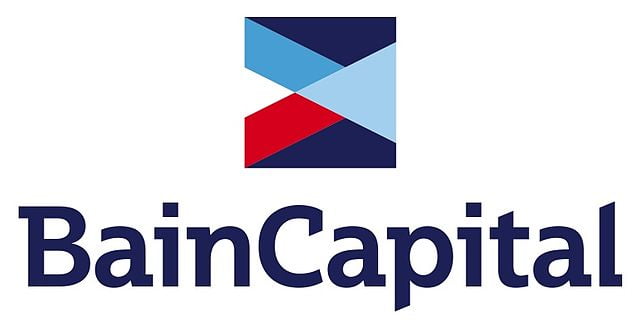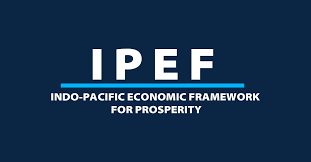Welcome to Daily Banking Digest, your premier source for the latest news and insights on April 10, 2024, focusing on banking, the economy, and finance. Our platform offers a comprehensive overview of the day’s most critical financial stories, market trends, and economic developments. Whether you’re a professional in the financial sector, an investor monitoring market movement, or someone interested in staying informed about the economic landscape, Daily Banking Digest provides reliable, up-to-date information.
Join our Telegram Channel for Daily PDF in your Inbox – Click Here
Table of Contents
Bain Capital to Divest $429 Million Stake in Axis Bank
Bain Capital plans to sell its entire stake in Axis Bank on Tuesday, worth approximately $429 million. The private equity firm will exit its investment by selling 33.40 million shares, representing over 1% of the bank’s shares. The offer price range is ₹1,071 to ₹1,076.05 per share, with the lower band representing a 0.5% discount to the bank’s closing price on Monday.

Key Points:
Bain Capital’s Stake Sale: – Bain Capital plans to sell its entire stake in Axis Bank on Tuesday. – The stake sale will involve approximately 33.40 million shares, representing over 1% of the bank’s shares. – The offer price range is ₹1,071 to ₹1,076.05 per share.
Previous Stake Sales: – Bain Capital previously sold shares worth $448 million in Axis Bank in December 2023. – The firm also offloaded some of its stake in November 2022.
Bookrunner: – BofA Securities India is the sole bookrunner for the deal.
Axis Bank’s Performance: – Shares of Axis Bank have more than doubled since Bain Capital’s initial investment in 2017. – However, the shares are down 2.4% so far in 2024.
Godrej Properties’ Sales in FY24: NCR Accounts for Almost Half
Godrej Properties experienced a surge in sales in FY24, with the National Capital Region (NCR) and Mumbai Metropolitan Region (MMR) contributing significantly. The company expanded its presence in other cities, becoming a pan-Indian player with a strong presence in major real estate markets.

Key Points:
Sales Performance: – Nearly half of sales came from NCR, with bookings exceeding ₹10,000 crore. – MMR contributed 29% of total bookings, amounting to over ₹6,500 crore. – Sales volume increased by 31% to 14,310 homes, occupying 20 million square feet. – Sales value rose by 84% to ₹22,500 crore.
Quarterly Performance: – Q4FY24 sales reached ₹9,500 crore, a 135% increase year-over-year. – Total area sold in Q4FY24 was 8.17 million square feet, up 56%. – New launches in MMR and NCR drove quarterly sales.
Project Highlights: – Four projects recorded bookings over ₹2,000 crore in FY24. – Godrej Zenith in NCR and Godrej Reserve in MMR saw significant sales.
Expansion and Growth: – Godrej Properties expanded into Hyderabad, acquiring land parcels with a sales potential of ₹4,800 crore. – The company aims to strengthen its launch pipeline and continue its growth trajectory.
Public Consultation Period for Digital Competition Bill Extended by a Month
The Ministry of Corporate Affairs (MCA) has extended the deadline for public comments on the draft Digital Competition Bill and the report of the Committee on Digital Competition Law (CDCL) to May 15, 2024. The extension was granted in response to requests from stakeholders. The CDCL report recommends the enactment of a separate Digital Competition Act to enable the Competition Commission of India (CCI) to regulate large digital enterprises in an ex-ante manner.
Key Points:
Extension of Deadline: – The deadline for submitting comments on the draft Digital Competition Bill and CDCL report has been extended to May 15, 2024.
Stakeholder Input: – Stakeholders can now submit comments via email in addition to the e-consultation module.
Ex-ante Regulation: – The CDCL report recommends an ex-ante regulatory framework where certain conduct is defined as illegal upfront, rather than adjudicated after it occurs.
Digital Competition Act: – The proposed Digital Competition Act would complement the existing competition framework and enable the CCI to regulate large digital enterprises in a timely manner.
Big Tech Opposition: – Big Tech companies have expressed opposition to the introduction of an ex-ante regulatory framework.
CDCL Mandate: – The CDCL was tasked with examining the need for an ex-ante framework and submitting a report within three months.
Thresholds and Criteria: – The CDCL report establishes thresholds and criteria to identify Systemically Significant Digital Enterprises (SSDEs) that will be subject to ex-ante regulation.
SSDE Definition: – An entity will be deemed an SSDE if it meets certain financial strength and user base thresholds.
Draft Digital Competition Law: – The draft Digital Competition Law defines core digital services and sets specific thresholds for identifying SSDEs.
India Anticipates Average Monsoon Season, According to Skymet
Private weather forecaster Skymet predicts a normal monsoon in 2024, with rainfall expected to be 102% of the long-period average. The distribution of rainfall is likely to be more even than in previous years, with good rains expected in the South, West, and North-West regions. However, some initial deficit rainfall is possible in Bihar, Jharkhand, Odisha, and West Bengal.

Key Points:
Rainfall Prediction: – Monsoon rainfall in 2024 is predicted to be normal, at 102% of the long-period average (LPA) of 87 cm. – Rainfall between 96% and 104% of LPA is considered ‘normal’.
Distribution of Rainfall: – Rainfall is expected to be evenly distributed across the country. – Good rains are likely in the South, West, and North-West regions. – The core monsoon rainfed zone of Maharashtra and Madhya Pradesh will receive adequate rainfall.
Rainfall in Different Months: – June: 95% of LPA (16.53 cm) – July: 105% of LPA (28.05 cm) – August: 98% of LPA (25.49 cm) – September: 110% of LPA (16.79 cm)
El Nino and La Nina: – The transition from El Nino to La Nina is expected to strengthen monsoon circulation. – The second half of the monsoon season is likely to be stronger than the first half.
Impact on Agriculture: – A normal monsoon will help farmers in water-deficient states like Karnataka and Maharashtra plan sowing of kharif crops on time.
Apple’s Indian Ambitions: Building a Home Amidst Neighborly Envy
Apple is expanding its presence in India by investing in employee housing, indicating a deepening commitment to the country. This move mirrors Apple’s strategy in China, where it has established large-scale housing for workers near its factories. The housing project, supported by government funding, aims to increase recruitment, production, and Apple’s overall presence in India.

Key Points
Housing for Workers – Apple’s contract manufacturers and suppliers are building over 78,000 homes for employees in India. – Foxconn, Apple’s largest iPhone supplier in India, will utilize 35,000 units. – Tata Electronics and Salcomp will also build housing units for their employees.
China Model Replicated in India – Foxconn has implemented a similar model of employee housing in India as in China, providing living quarters, food, and medical care. – Large-scale employee housing aims to increase worker efficiency and security.
Apple’s Impact on India – Apple’s ecosystem is taking root in India, potentially shifting supply chains away from China. – India has gained market share in electronics exports, particularly in the UK and US. – Apple has become India’s largest blue-collar job creator, employing over 150,000 people directly.
Apple’s Decline in China – Apple’s iPhone sales in China have declined significantly due to geopolitical tensions and competition from local brands. – Huawei has emerged as a strong competitor in the premium smartphone market in China. – Apple is facing pressure from aggressive pricing by Chinese manufacturers like OPPO, Vivo, and Xiaomi.
Household Debt Surges: Loans Exceed Deposits for Three Consecutive Years
Indian households have been borrowing more money from banks than they have been depositing in recent years. This trend has pushed India’s household debt to a record high of 40.1% of GDP. While deposits have grown from 3.3% of GDP in 2020 to 4.5% of GDP in 2023, bank loans have risen from 2.9% of GDP to 4.9% of GDP over the same period. This increase in borrowing has been driven by unsecured personal loans, followed by secured debt, agricultural loans, and business loans.
Key Points:
Household Debt: – Indian households have taken more money from banks as loans than they have invested as deposits in the past three financial years. – Household debt has risen to a record high of 40.1% of GDP in December 2023. – Unsecured personal loans continue to grow at the fastest pace within household debt.
Deposits and Loans: – Deposits grew at a slower pace than loans in the first nine months of FY23 and FY22. – Deposits have grown from 3.3% of GDP in 2020 to 4.5% of GDP in 2023. – Bank loans have risen from 2.9% of GDP to 4.9% of GDP over the same period.
International Comparison: – India’s household debt is high relative to its per capita income. – Germany, China, Japan, and the USA have higher household debt relative to GDP, ranging from 50-75%. – Russia, Brazil, and South Africa have lower household debt relative to GDP, ranging from 20-35%.
Capital Market Investments: – Deposit growth has slowed, but there has been some incremental saving through capital markets. – The share of capital market investments has quadrupled to an average of 0.8% of GDP in the past seven years.
Impact of EU Carbon Tax on Indian Aluminium Producers: Limited, Says ICRA
The European Union’s proposed carbon tax, known as the Carbon Border Adjustment Mechanism (CBAM), is expected to have a limited impact on Indian primary aluminum producers. The tax, which will take effect in 2026, initially covers only direct process-related emissions, excluding indirect emissions from electricity production. As a result, the tax is estimated to add only 2-6% to current aluminum prices. However, if indirect emissions are included in the future, the impact could be more significant, potentially reaching 27-30% of current prices.
Key Points:
Impact on Indian Aluminum Producers: – Limited impact due to exclusion of indirect emissions in initial phase. – Tax estimated to add 2-6% to current aluminum prices.
Indirect Emissions: – Indirect emissions from electricity production contribute 80% to total emissions in primary aluminum production. – Inclusion of indirect emissions in future could significantly increase tax impact.
EU Aluminum Consumption: – EU is the second largest aluminum-consuming block globally. – India exported 0.7 million tonnes of primary aluminum to EU in FY23.
CBAM Implementation: – Transitional phase from October 2023 to December 2025 focuses on carbon reporting. – Financial adjustment for EU importers begins January 2026. – Price of CBAM certificates linked to EU-ETS carbon prices.
IPEF to Host Clean Economy Investor Forum in Singapore in June
The Indo-Pacific Economic Framework for Prosperity (IPEF) will host its inaugural Clean Economy Investor Forum in Singapore on June 5-6. The forum aims to attract investments in sustainable infrastructure, climate technology, and renewable energy projects. India will showcase its leadership in the clean economy and present investment opportunities in large infrastructure projects and climate tech companies.

Key Points:
1. Clean Economy Investor Forum: – To be held in Singapore on June 5-6. – Aims to bring together investors, entrepreneurs, and project proponents. – Focus on mobilizing investments in sustainable infrastructure, climate technology, and renewable energy.
2. India’s Participation: – Will showcase sustainable infrastructure projects in energy transition, sustainable aviation fuel, and other areas. – Will present investment opportunities in clean economy projects and climate tech companies.
3. IPEF Clean Economy Agreement: – Negotiations substantially concluded in November. – One of the four pillars of IPEF, along with trade, supply chain resilience, and fair economy.
4. IPEF Members: – Includes India, the US, Australia, and 11 other countries.
GST Collections as a Proportion of GDP Rise Gradually
Despite robust GST collections, their proportion to the size of the Indian economy has only gradually increased. While gross GST collections have grown, they still represent a relatively small percentage of GDP. However, the net GST to GDP ratio has improved, and GST buoyancy has remained above one for the past three years.

Key Points:
Gross GST Collections:
- Gross GST collections grew 11.5% to Rs 1.78 trillion in March 2023.
- Total gross GST collections for 2023-24 reached Rs 20.18 trillion, an 11.7% increase.
- The GST-GDP ratio was 6.86% in 2023-24, up from 6.72% in the previous year.
Net GST Collections:
- Net GST collections (after refunds) are more important for the government.
- The net GST to GDP ratio rose from 5.89% in 2022-23 to 6.13% in 2023-24.
GST Buoyancy:
- GST buoyancy, which measures the change in GST receipts relative to GDP growth, has remained above one for the past three years.
- Buoyancy has declined from 1.6 in 2021-22 to 1.3 in 2023-24.
Factors Contributing to Higher Collections:
- Digitization and formalization of the economy
- Increased economic activity
- Changes in tax policies
- Better tax enforcement
Future Trends:
- Economic recovery and government actions will shape future GST trends.
- Buoyancy is expected to remain strong due to factors such as smartphone penetration, fintech innovation, and e-commerce growth.
HDFC Credila Secures $100 Million in External Commercial Borrowings to Enhance Funding Options
HDFC Credila, an education finance NBFC, has secured $100 million through External Commercial Borrowing (ECB) from DBS Bank. The funds will be used to diversify funding sources and strengthen HDFC Credila’s position in the education finance sector.

Key Points:
1. ECB Raised: – HDFC Credila raised $100 million through ECB.
2. Lead Arranger and Book Runner: – DBS Bank acted as the lead arranger and book runner for the loan.
3. Transaction Details: – DBS Bank completed a $100 million transaction, which will support HDFC Credila’s growing retail education loan franchise.
4. HDFC Credila’s Focus: – HDFC Credila focuses on the education loans business.
5. HDFC Bank’s Stake Sale: – HDFC Bank sold a 90% stake in HDFC Credila to private-equity firms BPEA EQT and Chrys Capital.
6. HDFC Credila’s Objective: – HDFC Credila aims to borrow funds from diversified sources at competitive rates to offer competitive education finance products.
7. DBS Bank’s Support: – DBS Bank expressed support for HDFC Credila as the country’s leading education loan company.
8. HDFC Bank’s Stake Sale Reason: – HDFC Bank sold its stake in HDFC Credila to meet regulatory requirements before merging with HDFC.
Paytm Payments Bank MD & CEO Surinder Chawla Steps Down
Paytm Payments Bank’s Managing Director and CEO, Surinder Chawla, has resigned due to personal reasons. This resignation comes amidst regulatory scrutiny and changes in the bank’s board structure. Paytm continues to collaborate with banking partners to enhance its services.
Key Points:
Resignation of Surinder Chawla: – Surinder Chawla has resigned as Managing Director and CEO of Paytm Payments Bank. – His resignation is effective from June 26, 2024. – He will explore better career prospects.
Regulatory Scrutiny: – Paytm Payments Bank has been facing regulatory scrutiny from the Reserve Bank of India (RBI). – RBI restricted credit and debit transactions for the bank’s customers due to lapses in due diligence.
Board Reconstitution: – Paytm founder Vijay Shekhar Sharma stepped down as non-executive chairman of PPBL. – The board has been reconstituted with five independent directors and no nominees from Paytm.
Collaboration with Banking Partners: – Paytm continues to collaborate with banking partners to enhance its merchant acquiring and UPI services.
Government Considers Permitting Sugar Companies to Sell Ethanol Produced Prior to Ban on Cane Juice and B-Heavy Molasses
The Indian government is considering lifting the ban on the sale of ethanol produced from sugarcane juice and B-heavy molasses (BHM). The move aims to address the surplus ethanol stock held by mills and support the government’s ethanol blending target.
Key Points:
Ethanol Sale Allowance: – The government may allow the sale of ethanol produced before the ban imposed in December 2023. – The quantity of ethanol in stock is equivalent to 8 lakh tonnes of sugar, potentially increasing sugar diversion for biofuel production to 25 lakh tonnes.
Sugar Availability: – Sugar production is estimated at 320 lakh tonnes, excluding the 17 lakh tonnes diverted for ethanol. – The opening stock of sugar is 57 lakh tonnes, and with the surplus from this year, the closing stock is expected to be around 85 lakh tonnes.
Ethanol Blending: – The decision to allow ethanol sales will support oil marketing companies in meeting the ethanol blending target of 15%. – The current blending rate is 11.87%.
Industry Impact: – Sugar mills and distilleries that have invested in ethanol capacity will benefit from the lifting of the ban. – The move will address the confusion created by the government’s sudden ban.
Sugar Production Estimates: – The All India Sugar Traders Association has revised its sugar production estimate to 320 lakh tonnes. – Maharashtra and Karnataka are expected to contribute to higher production, while Uttar Pradesh may see a decline.
Tesla Explores Partnership with Reliance for Electric Vehicle Production in India
Tesla is reportedly in talks with Reliance Industries to establish a joint venture for manufacturing electric vehicles in India. The partnership aims to build India’s electric vehicle capabilities, with Reliance playing a significant role in establishing the manufacturing facility and ecosystem. Tesla has committed $2 billion to its India operations and is considering locations in Gujarat and Maharashtra for the plant. The company’s entry into India is seen as a natural progression, given the country’s growing population and demand for electric vehicles.
Key Points
Tesla’s Entry into India – Tesla has committed $2 billion to its India operations. – The company is considering locations in Gujarat and Maharashtra for its manufacturing plant. – Tesla plans to use the facility for domestic and export purposes.
Partnership with Reliance Industries – Tesla is in talks with Reliance Industries for a possible joint venture. – Reliance aims to build capacities for electric vehicles in India. – Reliance may play a significant role in establishing the manufacturing facility and ecosystem.
Looking for a Partner – Tesla may scout for another domestic partner if talks with Reliance do not fructify. – Senior Tesla officials are expected to visit India to finalize the plant location and joint venture details.
Government Support – The Indian government has approved a new electric vehicle scheme with tax reliefs. – The policy aims to position India as a global manufacturing hub for electric vehicles.
NCEL to Export 1,600 Tonnes of White Rice to Singapore
India’s National Cooperative Export Ltd (NCEL) has secured a deal to export 1,600 tonnes of white rice toSingapore, with plans to negotiate for an additional 2,000 tonnes. Despite Singapore not facing a rice shortage, NCEL has exported rice worth ₹1,325 crore to various countries, including Singapore. However, the cooperative faces challenges due to customs duty issues and the government’s ban on white rice exports.

Key Points:
Export Deal with Singapore: – NCEL to export 1,600 tonnes of white rice to Singapore. – Negotiations underway for an additional 2,000 tonnes.
NCEL’s Export Performance: – Exported rice worth ₹1,325 crore to various countries. – Has orders worth ₹10,000 crore for agricultural commodities, including rice.
Singapore’s Rice Situation: – Singapore is not facing a rice shortage. – NCEL has exported rice to Singapore to support their food security.
Government’s Export Ban: – Government banned white rice exports in July 2023 due to supply shortage concerns. – NCEL was authorized to export 50,000 tonnes of white rice to Singapore under a quota.
Rice Production: – Rice production projected at 123.82 mt for the current crop year. – Production is 2 mt lower than last year, excluding zaid crop.
Challenges: – Customs duty issues affecting rice exports.
India Expresses Concerns to Belgium Regarding Restrictions on Russian Diamond Trade
India’s External Affairs Minister, S Jaishankar, has expressed concerns to Belgium regarding the impact of the G7 ban on Russian diamond imports on India’s diamond industry. India is the world’s largest diamond polishing center, and the ban threatens to disrupt the supply chain and harm the industry.
Key Points:
- G7 Ban on Russian Diamonds:
- The G7 nations have imposed an import ban on non-industrial diamonds from Russia.
- The ban has been expanded to include Russian-origin diamonds from third countries.
- Impact on India’s Diamond Industry:
- India’s diamond industry is heavily dependent on rough diamonds from Russia.
- Surat, India, is the global hub for diamond polishing.
- The ban threatens to disrupt the supply chain and harm the industry.
- India’s Concerns:
- India is concerned that the ban will hurt its diamond industry more than Russia.
- India is seeking to soften, delay, or stop the ban from being implemented.
- Belgium’s Role:
- Belgium is the global hub for polished diamonds.
- India has raised its concerns with Belgium, which is a key player in the diamond trade.
Upcoming Meeting to Discuss 100-Day Agenda for Key Ministries
The Cabinet Secretary will convene a meeting with key economic ministry officials to establish an economic agenda for the first 100 days of the new government following the general election. The meeting will address issues such as GST rationalization, IBC amendments, and immediate economic challenges.
Key Points:
- Meeting Agenda:
- Rationalization of GST rate structure
- Amendments to Insolvency and Bankruptcy Code (IBC)
- Immediate economic challenges
- Economic Outlook:
- India’s economy projected to grow 7.6% in 2023-24
- Risks from volatile crude prices, tepid global demand, and geopolitical situation
- Ministry Presentations:
- Performance review of ministries over the past five years
- Immediate challenges, policy initiatives, and action plan for the first 100 days
- Other Key Items:
- Roadmap for next-level reforms in direct and indirect taxes
- Draft Insurance Laws (Amendment) Bill
- Consideration of company law committee recommendations
- Guidelines for ₹1 lakh crore innovation fund
- Pending Reforms and Flagship Schemes:
- Review of pending reforms and flagship schemes affected by COVID-19 and geopolitical challenges
- Post-Election Agenda:
- Ministries and departments developing a post-election agenda for the next 100 days
- Vision document for transforming India into a developed nation by 2047
CBIC Chief Emphasizes Expeditious Resolution of Pending Cases
The Central Board of Indirect Taxes and Customs (CBIC) has instructed field formations to resolve legacy cases with no disputes. These cases, with a tax demand of approximately Rs 29,000 crore, have been pending for over a decade due to missing assesses, inadequate assets, and liquidation of assets. The CBIC chairman has emphasized the need to address this issue promptly and reduce the backlog.
Key Points:
- Legacy Cases: CBIC has identified legacy cases with a tax demand of Rs 29,000 crore that have been pending for over 10 years.
- Dispute Resolution: The CBIC has instructed field formations to dispose of legacy cases where there is no dispute.
- Challenges: Recovery of tax is not possible in many cases due to missing assesses, inadequate assets, and liquidation of assets.
- Parliamentary Standing Committee: The parliamentary standing committee on finance has highlighted the issue of tax arrears and recommended measures to reduce the backlog.
- Administrative and Legislative Measures: The committee has suggested administrative and legislative measures to address the problem of tax arrears.
Coal Production Boost: 20 Mines Set to Commence Operations by Year-End
Twenty coal mines are expected to become operational by the end of 2023, contributing an additional 100 million tonnes of coal production in the coming years. This development is crucial as India’s peak power demand is projected to exceed 400 GW by 2030.
Key Points:
- New Coal Mines: 20 coal mines, including seven from Coal India and three from SCCL, will become operational by year-end.
- Increased Production: These mines will contribute 100 million tonnes of coal in three to four years.
- Coal India’s Dominance: Coal India accounts for over 80% of domestic coal output.
- SCCL’s Role: SCCL is a government-owned coal mining company jointly owned by Telangana and the Centre.
- Milestone Achieved: India has crossed the milestone of 1 billion tonnes of coal and lignite production in 2023-24.
- Import Reduction Goal: India aims to eliminate coal imports by 2025-26.
- Coal Imports for Blending: In FY24, 22.20 MT of coal was imported for blending, compared to 30.80 MT in 2022-23.
PLI Scheme for Mobile Phones: Zetwerk’s Josh Foulger Highlights Impact on Production Growth
India’s Production Linked Incentive (PLI) scheme for mobile phones has hindered production growth due to stringent eligibility criteria. Josh Foulger, president of electronics at Zetwerk, suggests revising the scheme to prioritize value addition and address low localization. He believes Vietnam’s electronics export boom is short-lived due to labor shortages and a small domestic market.
Key Points:
Mobile Phone PLI Scheme:
- The current PLI scheme has stifled mobile phone production growth due to limited eligibility.
- A revised PLI 2.0 should link incentives to value addition, similar to the revamped IT hardware PLI.
Vietnam’s Electronics Export Boom:
- Vietnam’s electronics export boom is expected to be short-lived due to a shortage of skilled workers.
- Vietnam’s small domestic market and rising wages also limit its long-term potential.
Zetwerk’s Export Strategy:
- Zetwerk plans to focus on exports for mobiles and TVs in Africa, the Middle East, and the US.
- The company is exploring “friendshoring” opportunities with US customers.
Gold’s Ascendance: Understanding Its Value Surge and Investment Strategies
Gold, a traditional asset class, has performed well in 2024, with an 11% increase in value. Its appeal stems from its role as a hedge against inflation and uncertainty, as well as its ease of conversion into cash or collateral. Despite its lack of industrial applications and interest-bearing nature, gold remains a popular investment choice for individuals and central banks alike.
Key Points:
Inflation and Uncertainty: – Inflation and supply disruptions caused by the COVID-19 pandemic and the Ukraine War have driven up demand for gold as a safe haven asset.
Political Uncertainty: – Upcoming elections in numerous countries, including India and the United States, have created political uncertainty, leading to increased demand for gold.
US Dollar Weakness: – The expected weakening of the US dollar due to interest rate cuts by the Federal Reserve is anticipated to boost gold prices.
Limited Supply: – Global gold production is limited, with China accounting for only 10% of output. Demand consistently exceeds supply, contributing to gold’s value.
India’s Love-Hate Relationship with Gold: – India has a long history of gold hoarding, but policymakers have attempted to curb imports through various schemes.
Financial Engineering and Gold: – India’s jewelry industry has innovated to meet domestic and global demand, while financial instruments such as Sovereign Gold Bonds and gold ETFs provide alternative ways to invest in gold.
Gold Exposure Options: – Investors can choose from physical gold, Sovereign Gold Bonds, gold ETFs, gold loans, and shares in gold-related companies to gain exposure to the metal.











